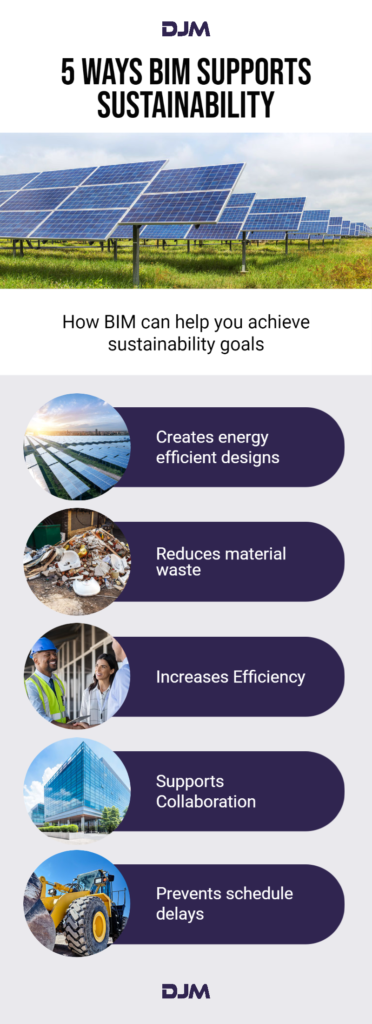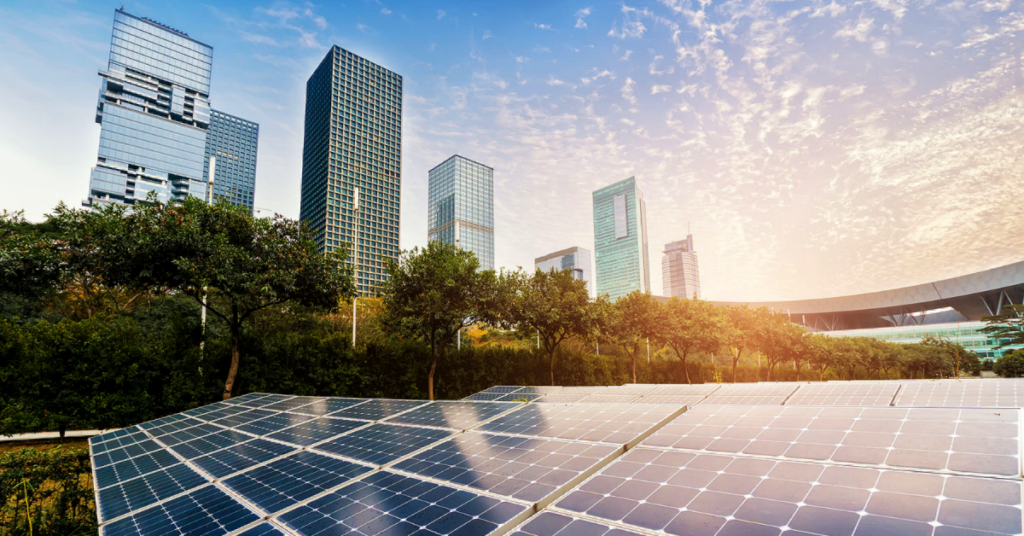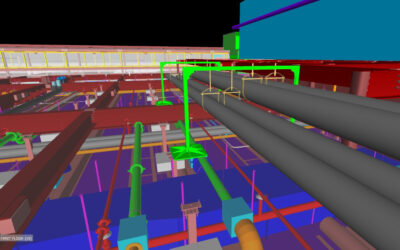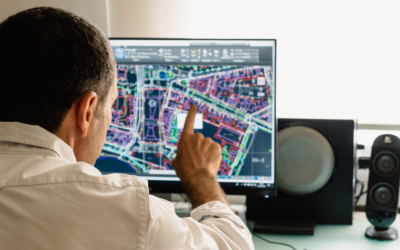How to Use BIM to Achieve Sustainable Construction Goals
Builders are under pressure to build more sustainably while supporting a growing population. The construction industry is a major source of pollution, accounting for 39% of global carbon emissions, according to the World Green Building Council. While it’s true that the industry needs to cut emissions, it must also support the needs of a surging population: Since 2007, more than half the world’s population has been living in cities; a figure that’s expected to rise to 60% by 2030.
Because the construction sector has a major impact on global emissions, any efforts to build sustainably will make a difference. Technologies like Building Information Modeling (BIM) make it easy to balance business goals with sustainable construction practices—helping you reduce material waste, create energy efficient designs, and improve productivity throughout the project life cycle.
Below, learn what sustainable construction is and find out four ways BIM benefits both the environment and the bottom line.
What Is Sustainable Construction?
The Environmental Protection Agency defines sustainable construction as “the practice of creating structures and using processes that are environmentally responsible and resource-efficient throughout a building’s life-cycle from siting to design, construction, operation, maintenance, renovation and deconstruction.” This means you should prioritize sustainable building practices throughout the length of your project, from design to operation.
For your sustainability efforts to be successful, you should also ensure stakeholders are on board and regularly collaborating. This can be facilitated with BIM, which centralizes project data and makes it readily accessible for all team members.
How to Use BIM to Achieve Sustainable Construction Goals
BIM is one of the most common tools used in sustainability initiatives, and for good reason. Here are four ways you can use BIM to reduce emissions while supporting your business goals.

Share this Infographic on Your Site
Use this embed code if you want to share the infographic on your own site!
<h3>Share this Image On Your Site</h3><textarea onclick='this.focus();this.select()' style='width:540px;height:120px'><p><strong>Please include attribution to caddjm.com with this graphic.</strong><br /><br /><a href='https://caddjm.com/bim-sustainable-construction/'><img src='https://caddjm.com/wp-content/uploads/2022/08/BIM-Sustainable-Construction-Infographic-1-372x1024.png' alt='BIM and Sustainable Construction Infographic' width='372px' /></a></p></textarea>
1. Supports Collaboration
Sustainable construction requires a collaborative approach. Focus on bringing together stakeholders at all stages of the project to create a truly sustainable design. When designing an HVAC system, for example, not every team member will know how different choices affect energy use. By working together and bringing in specialists like HVAC contractors during the design phase, teams can share their expertise to create a more energy efficient system.
BIM simplifies this process, allowing project members to create, input and manage information about building systems in a central database. This improves collaboration between team members across the project life cycle, leading to fewer errors and more sustainable designs.
2. Reduces Material Waste
The construction industry creates a lot of waste, with 10-15% of materials wasted on every build. Rework is mostly to blame, creating a surplus of materials that are discarded after the project ends.
To prevent wasting materials, you can use BIM to identify and resolve errors during the design phase. With its clash detection capabilities, you can find interferences between trades and fix them virtually. This saves time and resources, since changes are made to the virtual model as opposed to the physical structure. Reducing waste not only helps the environment but also the bottom line—helping you save money and boost productivity.
3. Creates Energy Efficient Designs
Sustainability begins with an energy efficient design. Design choices affect factors like heat loss, making them important to test before construction starts. With BIM, you can calculate how much energy designs waste—comparing different options to find the most sustainable one. BIM also provides an overview of all building elements, helping you identify (and avoid) design choices that waste energy.
Want to learn more about BIM and its benefits in construction? Download our e-book, The Ultimate Guide to Building Information Modeling (BIM).
4. Improves Productivity
Miscommunication hurts productivity and pushes back project schedules. When projects are delayed, equipment runs for longer periods of time, generating more pollution. The emissions generated by construction equipment are significant: a single diesel engine can waste up to one gallon of fuel for every hour it idles.
To curb emissions caused by project delays, you should create clear lines of communication between stakeholders. BIM facilitates this process—allowing team members to access information across the project life cycle in a single database.
This collaborative approach puts team members on the same page, reducing miscommunication and improving their understanding of the project. A clear, connected vision of the project translates into fewer delays, meaning equipment runs for shorter periods of time and projects are kept on schedule.
Reach Your Sustainable Construction Goals with BIM
BIM can jumpstart your sustainable construction journey—helping you improve efficiency, eliminate material waste and reduce your carbon footprint. Discover how DJM’s BIM services can help you improve sustainability while supporting the bottom line. Get a quote today.



